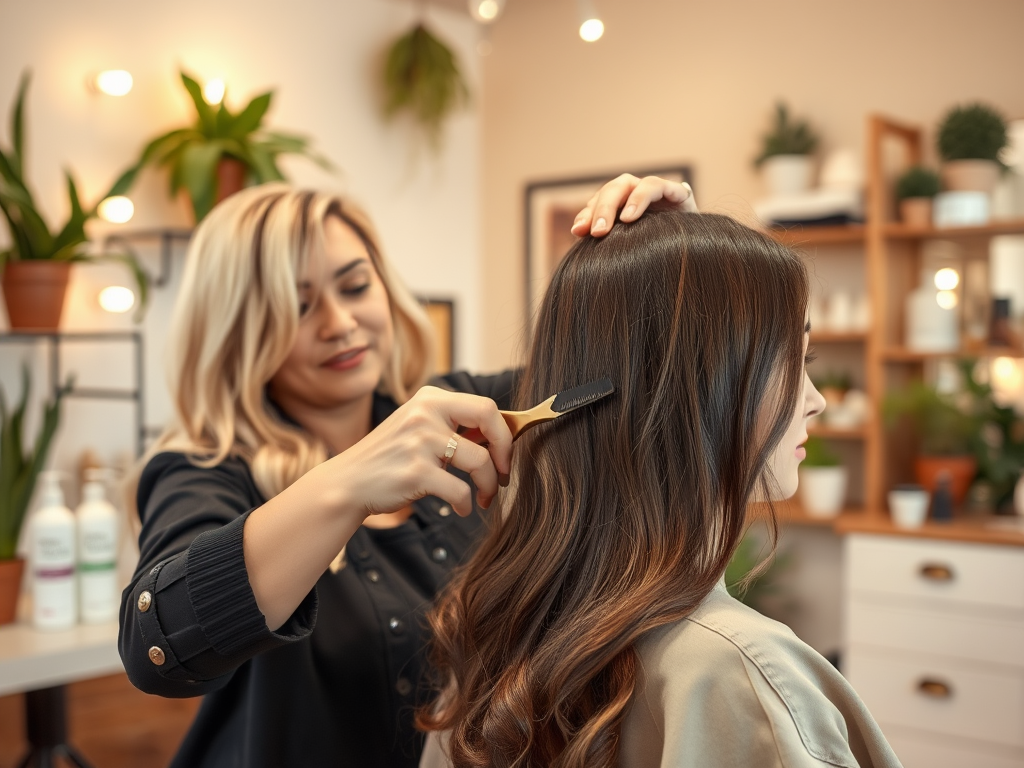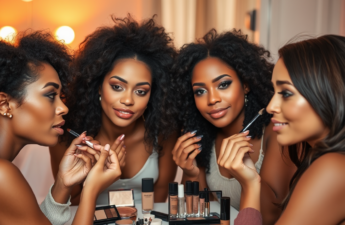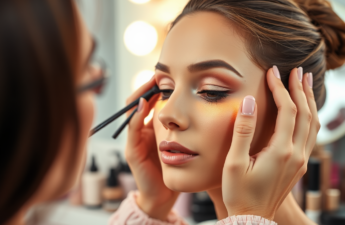Coloring your hair is more than just an aesthetic choice; it’s an expression of individuality and personality. However, the process can be strenuous on your hair, risking its health and shine in the pursuit of vibrant colors. The challenge lies in achieving that perfect shade while keeping your hair in optimal condition. Fortunately, with the right preparation and care, you can protect your locks and leave the salon with hair that feels as good as it looks. In this article, we outline essential tips to safeguard your hair before and during the coloring process, ensuring you can enjoy your new hue without compromise.
As with many beauty regimens, knowledge is power. Understanding how to prepare your hair for color will make all the difference. From choosing the right products to incorporating protective techniques during application, every step counts. Whether you’re a coloring veteran or trying it out for the first time, these tips will provide the insight you need to maintain your hair’s integrity while enjoying beautiful color transformations.
Understanding the Importance of Hair Protection Before Coloring

Protecting your hair prior to coloring is fundamental. Hair is particularly vulnerable to damage from chemical processes, and without proper care, you may end up with brittle, lifeless strands. When you expose your hair to dye, the cuticle layer opens, allowing color penetration; thus, it’s crucial to ensure your hair is in good health before this process begins. Neglecting pre-color care can lead to unwanted outcomes, such as uneven color or dryness. Additionally, investing time and effort into preparing your hair can result in a longer-lasting, more vibrant hue. This section delves into why understanding hair protection is vital for your overall hair health.
Choose the Right Products

Before you dive into the world of hair dye, it’s essential to select the correct products that can create a shield for your strands. Using the right shampoos and conditioners tailored to your hair type will help you maintain moisture and manageability. Opt for sulfate-free options as they are gentler and preserve your hair’s natural oils, which play a crucial role in protecting against damage. Alongside shampoos and conditioners, exploring deep conditioning treatments in the days leading up to your coloring appointment can truly make all the difference.
| Type of Treatment | Benefits |
|---|---|
| Protein Treatments | Strengthens hair and adds structural support. |
| Moisturizing Masks | Replenishes hydration, leaving hair soft and supple. |
| Oil Treatments | Adds shine and helps prevent breakage. |
Shampoo and Conditioner
Sulfate-free shampoos and rich moisturizing conditioners are your best friends before coloring. They help cleanse your hair without stripping it of essential oils. Choose products that contain natural ingredients, as these can provide additional nourishment. Look for labels that promote hydration, smoothing, and protection as a way to prepare your hair. The goal should always be to maintain your hair’s natural moisture while also ensuring it’s clean and product-free before applying any dye.
Deep Conditioning Treatments
Incorporating deep conditioning treatments into your hair care routine can drastically improve your hair’s overall health. It is recommended to start these treatments at least a week before your coloring appointment. Aim for at least two to three sessions, targeting areas that may need extra care. Not only will this help to strengthen and hydrate your hair, but it will also create a barrier against potential damage from the coloring agents. Some popular options include avocado oil masks and coconut oil treatments, which have been praised for their enriching properties.
Prepare Your Hair for Coloring
Preparation is key when it comes to safeguarding your hair prior to applying color. Start by assessing the current state of your hair. If there are noticeable split ends or damaged strands, a trim is necessary. This trim is not just for aesthetics; it can greatly reduce the chances of further damage during the dyeing process. Moreover, it ensures that your color will be applied evenly, resulting in a more pleasing finish.
Trim Split Ends
Regular trims help maintain hair health and should be done every 6 to 8 weeks, especially before coloring. Removing split ends can prevent them from traveling up the hair shaft, which causes even more damage. By taking this step, you ensure that your hair will not only look great but also feel great during and after the coloring process.
Avoid Heat Styling
Limiting your use of heat styling tools, such as straighteners and curling irons, can significantly strengthen your hair before dyeing. Heat can make hair more porous, which means it absorbs dye unevenly and can lead to damage. You might want to consider opting for heatless hairstyles leading up to your appointment. Simple styles that don’t require heat can preserve moisture and minimize stress on your strands, keeping them strong and healthy.
Techniques for Protecting Your Hair During the Coloring Process
While preparing your hair is crucial, protecting it during the coloring process is equally important. Utilizing specific techniques can help shield your hair from damage while allowing for a vibrant color finish. For instance, applying a barrier treatment prior to coloring can provide an added level of protection. This barrier prevents the dye from fully saturating the hair shaft and causing excessive dryness. Ensuring you monitor the application time is also vital; over-processing can lead to unintended results.
Use a Barrier
Using oils or protective serums before dye application can create an effective barrier against potential damage. These products can include natural oils like argan or jojoba oil. Applying a light coat will help seal in moisture and protect your hair from direct contact with the dye. Many people have found that this technique results in softer, shinier hair post-color. It acts as an initial shield and can lead to a more polished look overall.
Monitor Application Time
Understanding how long to leave the dye on your hair is essential. Over-processing can lead to dry, damaged hair. It’s crucial to refer to the instructions provided with your dye kit and tailor the timing based on your hair type. Hair that has been previously colored may require less time, while virgin hair may need the full duration. Regularly checking the color penetration can help you achieve the desired result without compromising hair health.
Post-Color Care
What you do to care for your hair after coloring is just as crucial as pre-color preparation. Maintaining your hair’s health can prolong the vibrancy of your new hue and keep your locks looking luscious. Hydrating treatments play a vital role in this stage, as they replenish moisture lost during the coloring process. Additionally, establishing a regular maintenance routine can shield your hair from fading and help sustain its overall quality.
Hydrating Treatments
After coloring, your hair will benefit from hydration to restore moisture. Opt for products that offer intensive moisture, like leave-in conditioners and deep hydration masks. Incorporate these treatments into your weekly hair care ritual to nurture your strands. Pay special attention to ends, as they tend to absorb the least moisture. The importance of hydration cannot be underestimated; it’s the key to avoiding dryness and maintaining color.
Regular Maintenance
Regular maintenance, such as using color-safe shampoos and conditioners, can prolong the life of your color. Incorporate weekly deep conditioning into your routine to keep your hair nourished. Avoid exposing your hair to chlorine and high-heat styling right after coloring for the best results. Keeping these practices in mind will ensure that your hair continues to look vibrant and healthy long after your coloring appointment.
Conclusion
Taking the necessary steps to protect your hair before coloring can significantly impact its health and appearance. By following these essential tips, you can enjoy vibrant hair color without compromising on strength or shine. Remember, your hair deserves just as much attention in preparation as it does during the coloring process. So, invest time in nurturing and protecting it, ensuring that you leave the salon not just with beautiful color, but with hair that feels fantastic.
Frequently Asked Questions
- What should I do if my hair is damaged before coloring? Consider deep conditioning treatments and trims to improve its condition before coloring.
- How long should I wait after coloring to wash my hair? It is recommended to wait at least 48 hours before washing your hair for optimal color retention.
- Can I dye my hair if it has been recently colored? Dyeing over recently colored hair can cause significant damage; it’s best to wait a few weeks.
- What are some signs that my hair needs extra protection? Look for signs like dryness, split ends, or excessive frizz, which indicate that your hair needs extra care before coloring.
- Is it necessary to have a professional dye my hair? While at-home kits are available, a professional can ensure better results and minimize damage, especially for complex colors or techniques.



